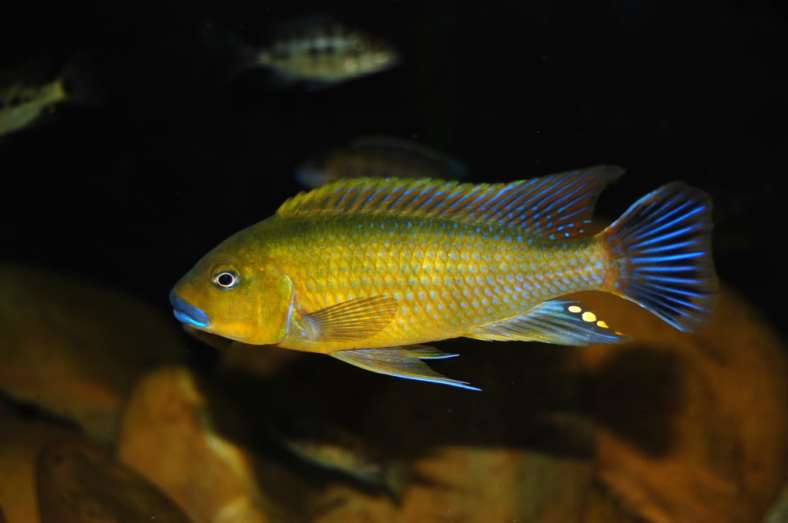
Send your inquiry of Blue Daktari Cichlid (Maylandia sp. daktari) to our email :
indonesiafishexporter@gmail.com
The Blue Daktari Pseudotropheus sp. “daktari” is a delicately colored African cichlid that is becoming more readily available. The male Blue Daktari is a beautiful bright yellow color with some having a bit of blue, and the female is more of a pinkish tan. But both have black trim on the top and bottom edge of the tail fin, lending to the descriptive name of “Scissor Tail Cichlid”.
This fish is one of the cichlids from Lake Malawi that are called Mbunas. The Tonga people of Malawi named these fish Mbuna, as that term means “rockfish” or “rock-dwelling”. This name aptly describes the environment these fish live in. They inhabit rocky areas full of cracks and crevices, as opposed to being open water swimmers like the Utaka cichlids and other “haps”. There are 13 genera full of very active and aggressive personalities of Mbuna cichlids. Other common names this fish is known by includes Doctor’s Cichlid, Metriaclima Daktari, Pseudotropheus Daktari, as well as Metriaclima sp. “daktari“, and of course Mbuna.
It is one of the smaller Mbuna but with the typical elongated, muscular body shape. In the wild Daktari males only reach about 4 inches (10 cm) and females are smaller still at about 3 inches (8 cm), but they can grow slightly larger In captivity. Being a smaller cichlid makes it easier to house. This cichlid also has a decent temperament if kept in a properly set up and maintained aquarium. With its striking color and ease of breeding, it is a great addition to a Mbuna cichlid tank.
Though easy to moderate to care for, the Blue Daktari is not a community tank specimen. It should not be housed with fish other than cichlids. A minimum sized tank of 50 gallons that is at least 36” long, will be suitable for one male and several females. A decor providing many hiding places as well as open space for swimming is needed for success. Multiple passageways and caves can be formed with piles of rocks.
Like other Mbunas, they may dig so make sure the rocks sit on the bottom of the aquarium not on the substrate. Arranging the rocks in a manner to make “territories” will help ease aggression, as will keeping them in a larger aquarium with other Mbuna species. Success is dependent on the aquarists willingness to do frequent water changes, have sufficient hiding places, and provide appropriate tank mates.
Stocklist of our Cichlids Fish (Click the picture below) :
Video of Blue Daktari Cichlid (Maylandia sp. daktari)
Infographic of Blue Daktari Cichlid (Maylandia sp. daktari)

Stocklist of our Tropical Fish / Aquarium Fish / Ornamental Fish (Click the picture below) :
















